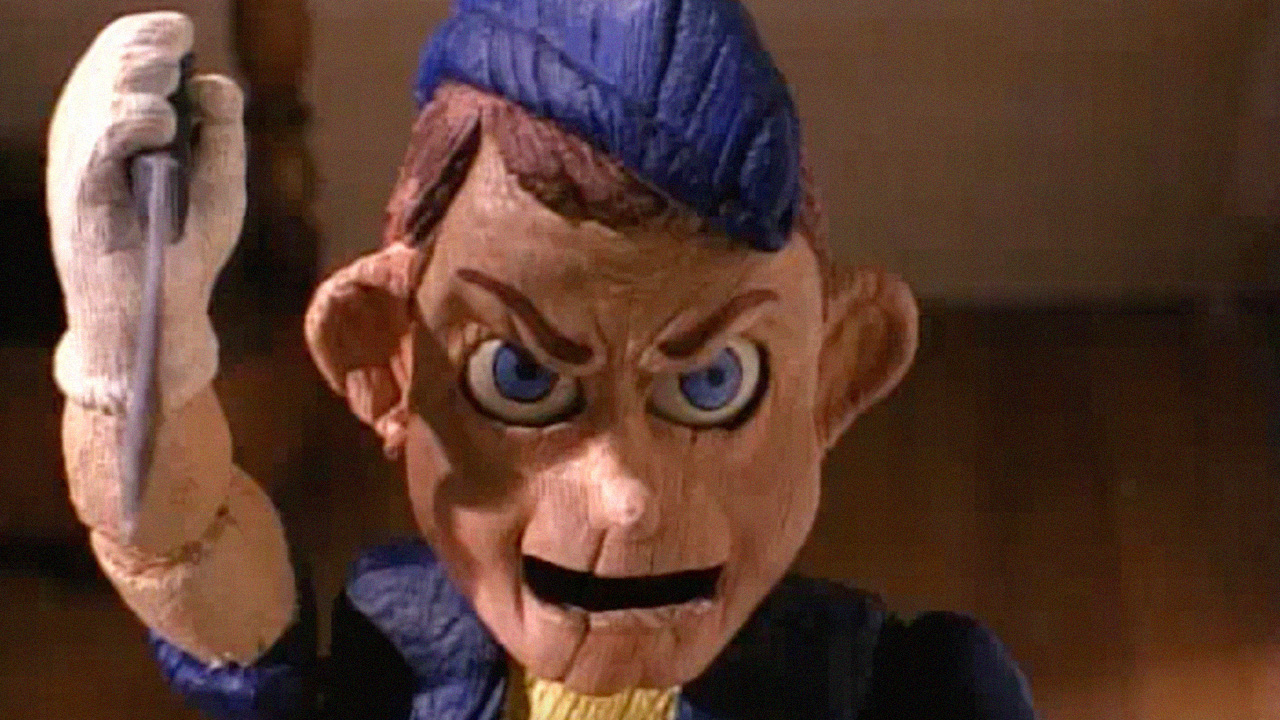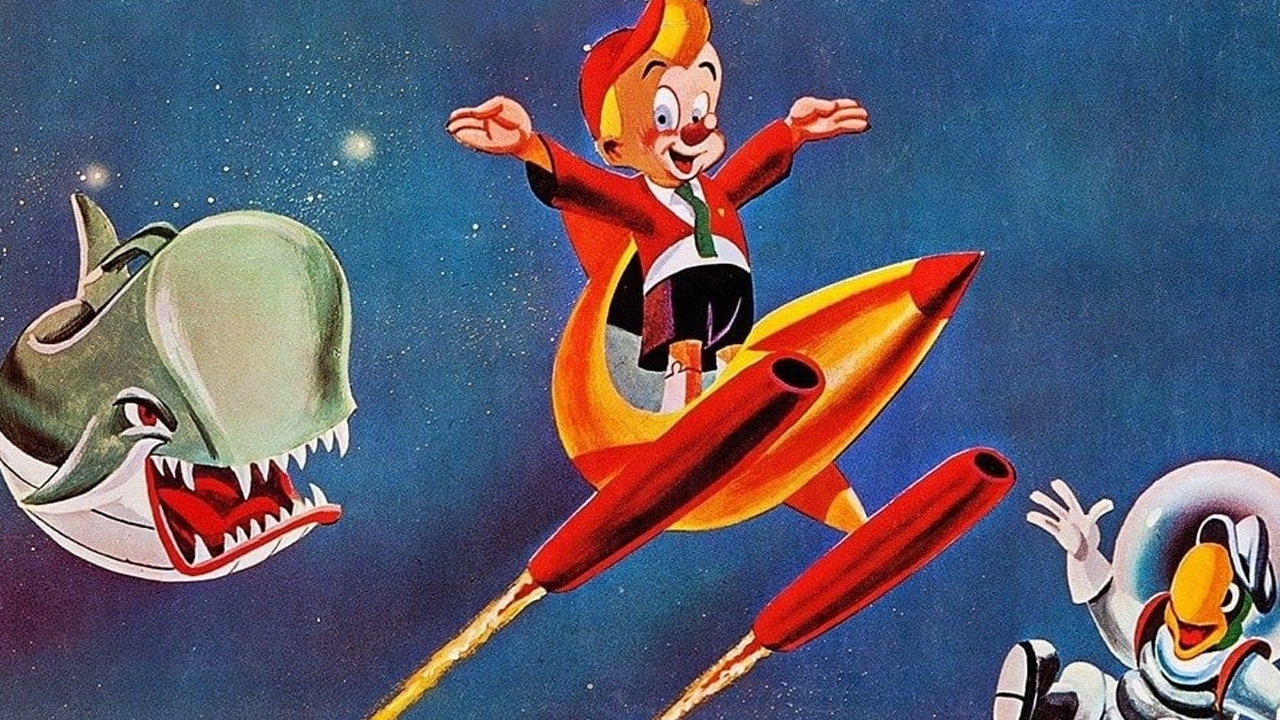There are no strings on these completely unhinged Pinocchio movies

2022 has been the year of Pinocchio with three very different, and very strange, takes on the classic character. However, as Liam Maguren writes, the wooden boy has a history of completely unhinged movie adaptations.
It’s been a big year for the world’s favourite puppet boy with three vastly different—and bizarre—Pinocchio films.
Beating the two big studio releases to the punch, instant meme classic Pinocchio: A True Story (technically a 2021 film) miraculously found its way into cinemas here earlier this year. Made in Russia and with an English dub featuring a half-enthused Pauly Shore as Pinocchio, its value speaks for itself.
Then came Robert Zemeckis and a platoon of animators each doing their own thing to create the visual gobbledygook that was Disney+’s Pinocchio remake. I wrote extensively about this one. My keyboard still has burn marks.
The most recent version, Guillermo del Toro’s Pinocchio, is easily the best of the lot with its incredible stop-motion and expansive themes of grief, innocence, and the brief beauty of existence. Oh, and it was also set in fascist Italy during Mussolini’s reign.
These all seem like unhinged takes on the classic fairy tale but, as the following versions prove, we’ve seen far stranger adaptations of the wooden boy. Trust me friends: we haven’t even begun sipping the donkey-morphing cool-aid yet.

Pinocchio’s Revenge (1996)
If you stuffed a lame legal drama inside one of the bad Child’s Play sequels, you’d get this wonky horror piñata wholly deserving of a thorough beating.
When her client’s sentenced to death for murder, a defence lawyer takes the deceased man’s wooden puppet home. (Why not, right? He’s not using it.) Taking the overworked parent trope to a new low, she lets her daughter keep the convicted killer’s doll because she completely forgot it was her birthday.
The film takes the courtroom proceedings and core mother-daughter relationship very seriously—as if no one realised their film was called Pinocchio’s Revenge. And yet, its absolute refusal to acknowledge its own silliness makes this glorified episode of Goosebumps eminently more watchable, complete with a “gotcha” twist ending RL Stine would spit at.
Pinocchio himself is a cheap-looking little pervert who takes great glee in spying on naked people. He only speaks to the little girl in a semi-Poltergeist manner, foreshadowing the killing spree he threatens to commit while gaslighting the child in front of her own therapist. Sometimes his mouth moves; sometimes it doesn’t. There’s no logic to it.
It’s somewhat adorable seeing this straight-to-daytime-TV movie apply cinematic language to boring items—one scene has a crash zoom of a dead cricket, followed by a slo-mo birds-eye view of a dropped glass of milk, followed by a dolly shot of a hallway. But none of that compares to the hilarious cost-cutting death scenes, which largely consist of people getting whacked by a stick (hence, “wonky horror piñata”). If anything, the most gruesome act of violence comes early on in the film when the lawyer’s daughter savagely bites a chunk off a bully’s ear.
If you’re looking for a subversive take on Pinocchio that’s actually clever and funny, you’re better off (re)watching Shrek and Shrek 2.

Pinocchio (2002)
Italian filmmaker and actor Roberto Benigni was on top of the world—as well as a crowd of people—when he scooped up Oscars for 1997’s Life is Beautiful. In what seemed like an attempt to prove life was actually a hideous monstrosity, he then followed up with his hugely miscalculated take on Pinocchio.
Benigni’s heart was in the right place. Disney’s brilliant 1940 film kind of bastardised Carlo Collodi’s original story and, to Benigni’s credit, he created a faithful adaptation of the fairy tale. Aside from the fact that he cast himself as Pinocchio.
It’s not like the film had a low budget, sporting a respectable production design and a range of special effects. However, none of that went into making Benigni look like a convincing puppet. Or a convincing boy. Or anything to convince you that you’re not looking at an obviously adult man pretending to be a small child.
To make matters even worse, a bad English dub was added right before its release to American audiences, which is like putting a plaster on a malignant tumour.
You may think I’m being harsh and punching down on this two-decade-old film, but I assure you, critics at the time were even less forgiving. In 2002, the New York Times mercilessly wrote: “Osama bin Laden could attend a showing [of Pinocchio] in Times Square and be confident of remaining hidden.”
This story has a good ending though, it just took 17 years to get there, with Benigni eventually finding redemption by playing an age-appropriate Geppetto in 2019’s much-respected Pinocchio from writer-director Matteo Garrone (Tale of Tales).

Pinocchio in Outer Space (1965)
The good behaviour that earned the puppet his flesh and bones meant diddlysquat in this mid-60s animated sequel. Before the titles even roll, we hear the Blue Fairy explain to her mother how Pinocchio tried to be a good boy but reverted to being a jerk again and thus got turned back into wood. We also hear a separate narrator say how this story “is based on a true portrayal of outer space and could actually happen to a puppet… come alive!”
That’s right. This is the original Pinocchio: A True Story.
The marionette business has dried up, so Geppetto considers carving rocket ships instead, but space travel’s being blocked by Astro the flying galaxy whale. Assuming viewers will accept this knowledge without question, the film moves onto Pinocchio merrily walking to school (like before) and getting tricked by a humanoid fox (like before) about a frog’s ability to teach hypnosis (a complete left turn from before). Then an astronaut turtle takes him to space, believing Pinocchio can hypnotise Astro, only to get them both completely lost.
Mixing like peanut butter and Pepsi, Pinocchio in Outer Space blended the popularity of Pinocchio with the fever surrounding the space race with zero consideration of whether the two flavours worked together. And just like a PB&P smoothie, you’ll never forget the experience, if just for the sheer audacity of its creation.
You’d think no one would ever dare try to tell another story about a mischievous wooden toy and a disillusioned space ranger attempting to get back home. And yet, 30 years later, Pixar would release cinematic classic Toy Story.

















